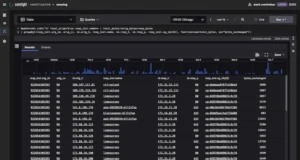As agencies accelerate their shift to cloud-based services, a fundamental question arises: How can governments ensure the confidentiality, integrity, and availability of data, especially as the threat landscape grows increasingly complex?
The traditional perimeter-based security model, once centered on data centers and internal networks, is rapidly becoming obsolete. Today, government data traverses interconnected systems, shared platforms, and external providers, creating a distributed model that, while offering scalability and agility, also expands the attack surface.
This shift necessitates a move beyond compliance-driven security to a trust-driven approach, one that prioritizes transparency, accountability, and resilience at every stage of the data lifecycle. Customer data is more than just records; it’s a public asset, and a breach can erode confidence in government services and cause tangible harm to citizens.
“Protecting customer data is a moral and civic responsibility.”
Strengthening customer trust through secure cloud practices hinges on several key pillars:
- Visibility and Governance: Understanding where data resides and who has access to it is paramount. A unified view of information assets and access permissions enables leaders to identify vulnerabilities proactively. This requires mature governance, clear ownership of systems, and continuous monitoring.
- Identity-Centric Security: As ASIO predicts a more dynamic and degraded security environment in the coming years, identity has become the new perimeter. Adopting zero-trust principles—verifying every request and limiting permissions—reduces the risk of compromised credentials.
- Digital Resilience: Breaches are inevitable. Encryption, automated backups, and well-practiced incident response plans are essential for transforming disruptions into continuity. These capabilities reassure customers that their data remains protected and recoverable, even in moments of crisis.
While technology plays a crucial role, true cloud security goes beyond mere implementation. Effective security depends on people understanding their role in maintaining it. Ongoing education, clear communication, and a shared sense of accountability embed a culture where security becomes instinctive, not procedural.
Agencies must also align their security investments with real risks, focusing on building stronger, simpler, and more adaptive defenses. Automation and intelligence can free up scarce human expertise for critical analysis and response, while governance frameworks ensure every initiative supports the overarching goal of protecting customer data.
As cloud adoption continues to accelerate, so too will the expectation that government services remain secure and transparent. The Australian Government‘s 2023-2030 Australian Cyber Security Strategy underscores the commitment to improving cybersecurity, managing cyber risks, and better supporting customers.
Ultimately, agencies that embed security into every aspect of their cloud strategy—from identity and governance to resilience and response—can safeguard more than just information. They can build a foundation of public trust and drive the next chapter of digital government, where citizens can confidently engage with online services, knowing their data is protected.
By 2026, 75% of organizations are expected to leverage specialized cloud computing services to accelerate deployment and optimize AI scaling.This underscores the urgency for governments to embrace robust cloud security practices now.


